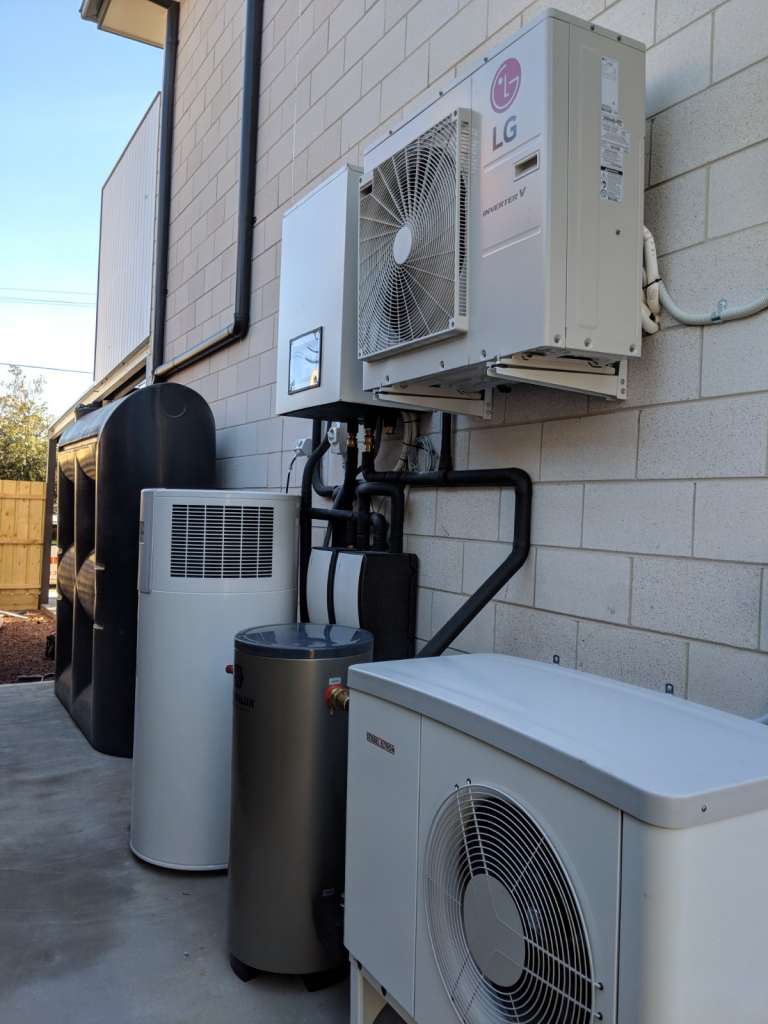
Most Comfortable Heating
Heat pump hydronic heating is the most comfortable form of heating because it is radiant. It is also capable of cooling in summer. Read more
Feel the difference between radiant heat and hot air blown at you. Radiant heat is also better for people with asthma or respiratory issues.
A heat pump can also cool in summer with cool water through underfloor hydronic circuits or chilled water through fan coil convectors.
Your heat pump hydronic heating and cooling system may include a combination of underfloor circuits, radiators, hydronic towel rails and convectors.
Reduce Global Warming
Power your heat pump with solar panels to help reduce global warming.
Heating, cooling and domestic hot water typically represent about two thirds of domestic power consumption. Heating creates the largest demand for household power consumption in southern and inland Australia.
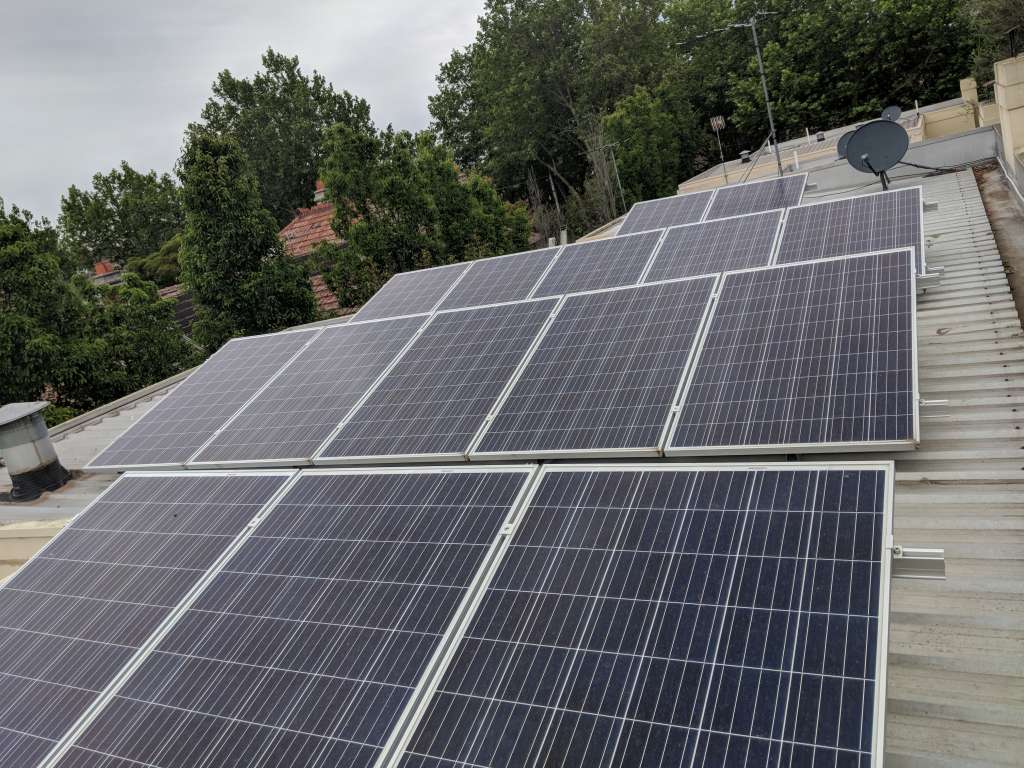
Hydronic Heating Methods
There are several hydronic heating methods available:
- Underfloor systems
- Radiator panels
- Hydronic towel rails
- Fan-coil convectors
Hydronic Cooling
- Hydronic heat pumps can provide cooling in reverse-cycle
- Fan coil convectors provide the best cooling using chilled water with integrated fans
- Underfloor systems can be used for area cooling using cool water above dew point
- Radiator panels and towel rails cannot be used for cooling
- Read more: heat pump hydronic cooling
Underfloor Hydronic Circuits
- A heat pump provides efficient underfloor heating in winter
- Feel luxurious radiant heat under your feet
- Use area cooling in summer with cool water above the dew point
- Area cooling works best with fans making air movement across the cool floor
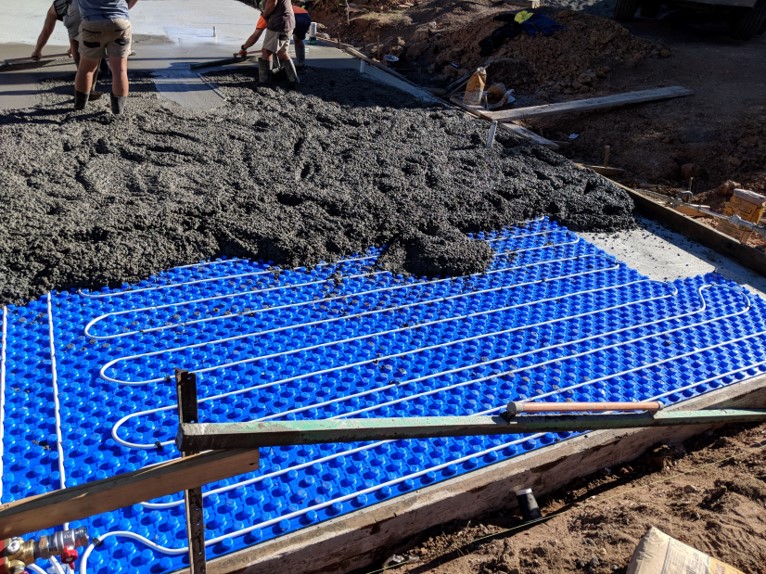
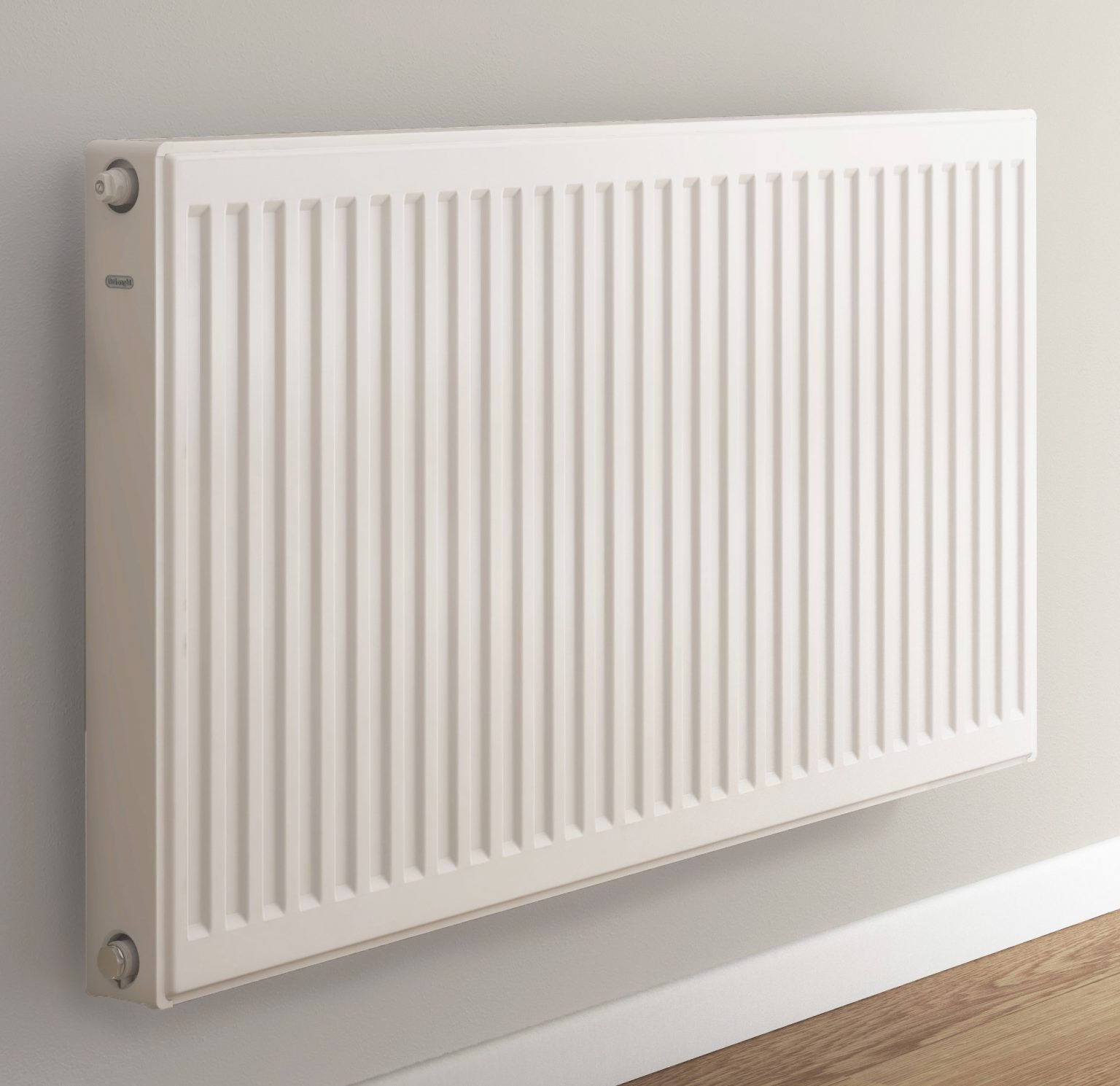
Radiator Panels
- Best used with high temperature heat pumps
- Ideal for houses with suspended floors, with pipes under the sub-floor
- Easier for retrofitting a hydronic heating system
- Choose from many styles and sizes
- For two-storey homes, consider underfloor heating on ground floor and radiator panels on 1st floor
Hydronic Towel Rails
- Used to warm and dry towels
- Will heat a small bathroom
- Designed for the humidity of a bathroom
- Available in many styles and sizes to suit
- White radiates better than chrome
- Black radiates better than white
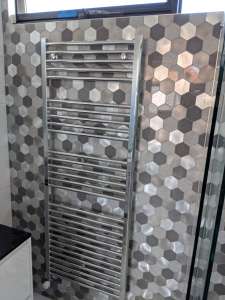
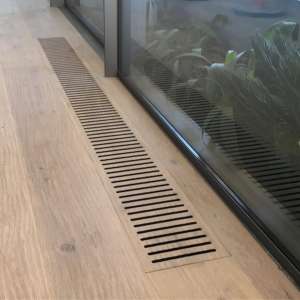
Floor Trench Convectors
- Designed for foot traffic areas
- Ideal with floor to ceiling doors & windows
- Ideal for suspended floors
- Can be installed in addition to radiator panels & underfloor hydronic systems
- Can be used for cooling in reverse cycle with chilled water and integral fan option
- Match trench grills to your floors
Wall Mounted Fan Coil Convectors
- The integrated fan draws air across the cold hydronic coils making it very effective for summer cooling
- Designed for cooling in reverse-cycle with chilled water absorbing room heat and moisture
- Concealed fan coil options available for ceilings, bulkheads or in walls
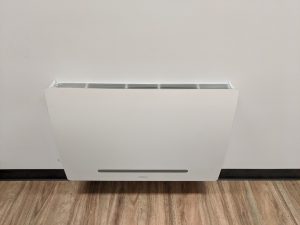
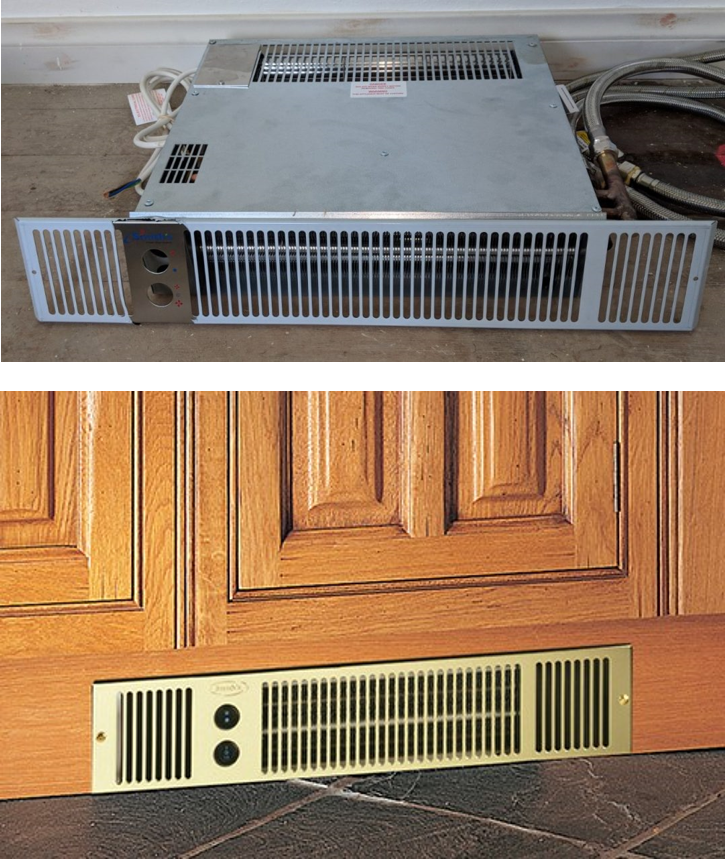
Space Saving Fan Coil Convectors
Consider space saving fan coil convectors as another hydronic heating option when space for other hydronic heating solutions are limited. Mount them in your cabinet plinths or under robes and cupboards.
The integral fan draws room air through the hot hydronic coils providing effective heating in winter.
Choose from a range of facia panel colours to suit the décor of your cabinetry.
Your Project
Send us the plans of your new build or renovation. We can help you explore your electric heating and cooling options.
Design Tips
- Consider sunshine and prevailing wind
- Install ceiling fans to reduce the effective temperature you feel in summer
- Include room zoning to reduce your heating and cooling costs
